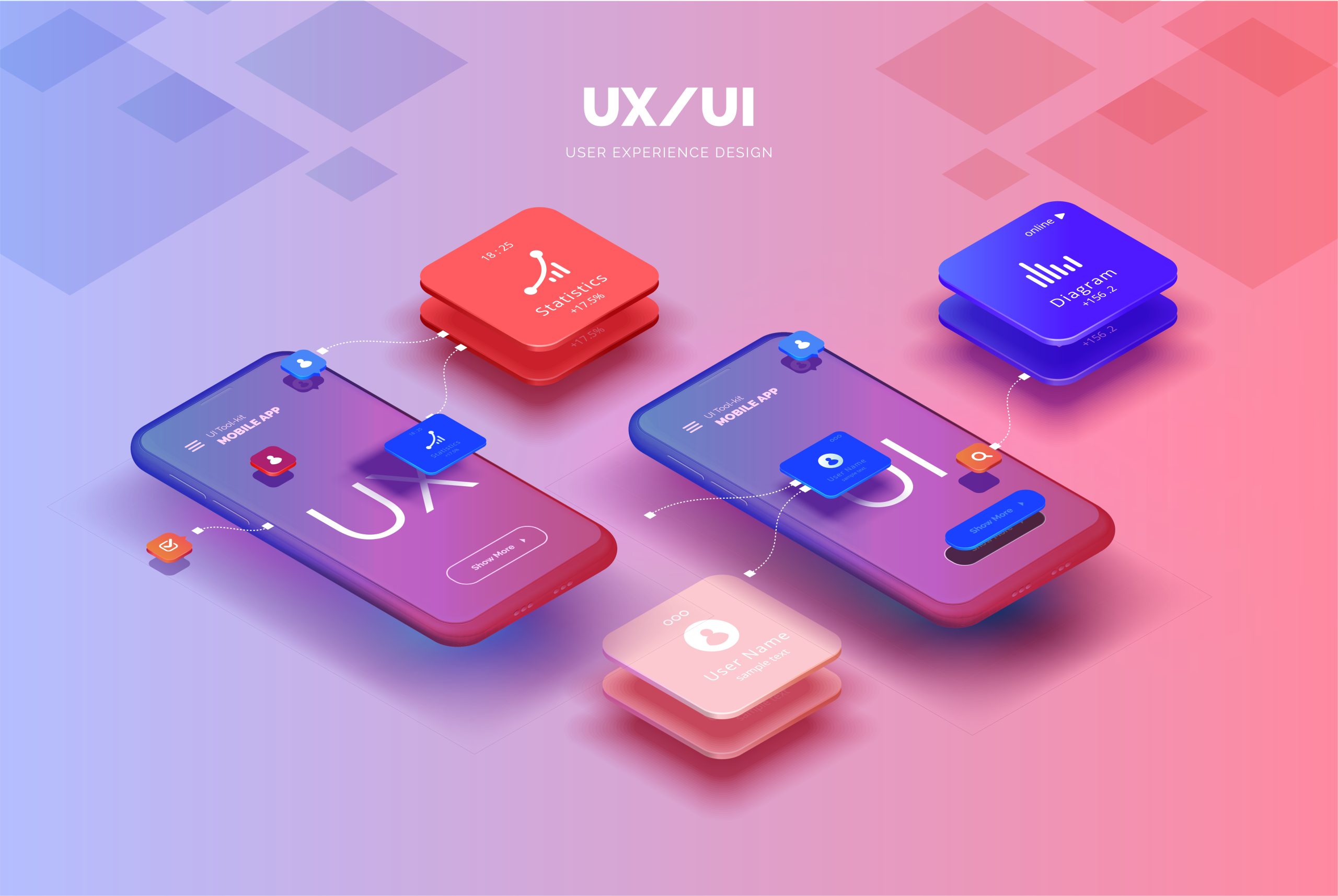Introduction
The interface is disappearing.
As dramatic as that sounds, we are on the brink of a UI/UX transformation more radical than anything we’ve seen in the past two decades. From skeuomorphism to flat design, from web-first to mobile-first, designers have always evolved alongside devices and technologies. But now, the evolution is not about design trends or frameworks—it is about a complete shift in how humans interact with machines. The shift is toward chat interfaces and agentic AI. In this new paradigm, the traditional screen-based app interface is becoming secondary or even irrelevant.
This piece explores why the future of UI/UX will be dominated by conversational interfaces, how agentic AI is redefining design roles, and what this means for users, designers, and businesses. Backed by current research, expert opinions, and visual trends, we will argue why screens may no longer be the primary interface between human and machine.
1. Conversational Interfaces: The New Default
Voice and text-based interfaces are no longer niche. According to Gartner, by 2026, “90% of enterprises will use conversational AI platforms for customer engagement, up from 25% in 2023.” (Gartner, 2023). Chatbots, virtual assistants, and voice-enabled devices like Alexa and Siri are already part of daily life. But this is just the beginning.
Unlike traditional GUIs, conversational interfaces are inherently:
- Efficient: Tasks that previously took multiple clicks and screens can now be done in a single sentence.
- Accessible: They transcend literacy and visual impairments.
- Scalable: One interface can cater to millions of users with real-time personalization.
As Alex Spinelli, former CTO of LivePerson, said in an interview with Forbes, “The app model is breaking down. Users don’t want to download another app. They want frictionless, outcome-oriented experiences. That’s what chat offers.”
2. Agentic AI: The Interface That Acts
If conversational UI simplifies interaction, agentic AI eliminates it.
Agentic AI refers to systems that act autonomously on behalf of users, making decisions, initiating actions, and learning from behavior. Think of AI agents that book meetings, monitor expenses, auto-respond to emails, or negotiate travel plans without user intervention.
These agents reduce or eliminate the need for interfaces altogether. The role of design shifts from “how it looks” to “how it behaves.”Dr. Ethan Mollick, Associate Professor at Wharton, captures this well: “We are heading into an age where interfaces are replaced by conversations, and then conversations are replaced by anticipation.” (Harvard Business Review, 2024)

3. What This Means for Designers
Designing for chat and agentic AI is a whole new ballgame.
- Less Screen, More Scenario: UX design becomes about crafting flows, tone, and context.
- Conversational Design: Writers, not just visual designers, now sit at the center of design teams.
- Ethics and Trust: How do we build interfaces we don’t see but must trust?
Kriti Kapoor, UX Researcher at Google, shared in a panel hosted by Awwwards: “Design is moving from interface building to behavior mapping. We’re designing not just pixels, but actions.”
Kriti Kapoor, UX Researcher at Google, shared in a panel hosted by Awwwards: “Design is moving from interface building to behavior mapping. We’re designing not just pixels, but actions.”
4. Use Cases Already Proving the Shift
- Slack + GPT Integration: Teams increasingly rely on GPT agents in Slack to summarize threads, schedule meetings, and draft responses—without switching apps.
- WhatsApp for HR/Finance/Support: Startups like DutyPar and Yellow.AI are moving HR and employee workflows entirely to chat interfaces.
- Agentic CRM Tools: Tools like Humata, Jasper and Copy.ai are beginning to automate decision-making in content and customer workflows.
5. Tools Driving the Future of UX
Designing for conversational and agentic interfaces requires new tools and workflows:
- Voiceflow: A tool for designing, prototyping, and launching conversational agents without code.
- Botpress: An open-source conversational AI platform with design-friendly flows.
- Rasa: A powerful open-source tool for building contextual AI assistants.
- Runway & Replit: For prototyping multi-agent systems and small LLM agents.
- Figma AI Plugins: For integrating AI into wireframing and logic building.
Traditional tools like Figma and Sketch are being augmented with AI capabilities to assist in rapid ideation, prototyping, and even copywriting.
6. Case Studies: Companies Pushing the Boundaries
- Kuki Chatbot (ICONIQ AI): A personality-rich chatbot that demonstrates the power of emotion and tone in conversational UX.
- Intercom Fin (AI Support): Intercom’s AI agent now handles over 50% of customer support queries independently.
- Replika AI: Designed as a friend, Replika shows how personality, empathy, and long-term memory can drive loyalty in AI interfaces.
- AutoGPT/AgentGPT Experiments: Though early-stage, these projects show how agents can perform compound tasks (research, execution, feedback) with no GUI.
7. Future Design Skills and Roles
As UI/UX shifts, so too must the designers. Skills that are growing in demand include:
- Conversation Design: Understanding user intent, dialogue flow, and NLP best practices.
- Prompt Engineering: Crafting system-level and user-level prompts for reliable, safe AI output.
- AI Ethics & Trust Design: Designing for bias, transparency, and explainability.
- Contextual Experience Mapping: Designing beyond the screen—across voice, sensors, behavior.
- AI UX Writing: Writing tone-consistent, goal-driven content for agents.
Emerging roles include:
- AI Interaction Designer
- Agent Experience Architect (AXA)
- Behavioral UX Specialist
- Trust Architect
8. Screens Won’t Vanish—But Their Role Will Change
To be clear, screens will still exist—but they will be fallback interfaces. When agentic AI can’t resolve a query, when conversation needs visual reinforcement, or when decisions require user validation, screens will step in. But they won’t be the starting point.
Think of the screen as the cockpit for exception handling, not everyday usage.
9. Visualizing the Shift
- Diagram 1: Traditional UI Pyramid (App > Menu > Button > Task) vs. Chat-First Flow (User Intent > AI Interpretation > Task Done)
- Diagram 2: A Day in the Life With Agentic AI — Booking meetings, paying bills, setting reminders, done through text/chat
- Image Collage: Apple Siri, ChatGPT UI, Slack GPT, WhatsApp Business—all showing chat interfaces replacing screens
10. The Human Side: What Users Actually Prefer
Contrary to designer instincts, users often want less visual interaction. In a 2024 study by Nielsen Norman Group, 64% of users preferred using a conversational agent over a traditional mobile app for tasks like booking tickets or checking accounts—citing “speed” and “not needing to learn the UI” as top reasons.
People don’t love UI—they tolerate it to get things done. If AI can get things done faster and more naturally, it will win.
11. Challenges Ahead
- Trust in Invisible Systems
- Handling Errors in Chat Interfaces
- Designing Personality and Empathy
- Data Privacy and Autonomy
These are not design problems alone—they are product, ethics, and engineering challenges. But designers must be at the table.
Conclusion: The End of Interface as We Know It?
We’re not saying UI is dead. But its role is being radically redefined.
As chat interfaces and agentic AI take center stage, UI/UX professionals must shift their thinking—from layout to logic, from control to collaboration, from design to dialogue.
The best UI may soon be the one you don’t even notice. Because it’s no longer on a screen—it’s in the conversation.
References
- Gartner (2023). Conversational AI Market Forecast.
- Mollick, Ethan. “What is Agentic AI?” HBR, Dec 2024.
- Nielsen Norman Group (2024). “User Preferences for Chat Interfaces.”
- Forbes (2023). “Why the App Model is Breaking Down.”
- UX Magazine. “Conversational AI is the Future of UX.”
- Medium. “Designing for Agentic AI.”
- Awwwards Panel, 2024. “UX in the Age of AI.”
- Intercom. “AI-Powered Support Benchmarks 2024.”
- Voiceflow Docs. “Conversational Design at Scale.”
- Rasa Blog. “Building Context-Aware Chatbots.”

